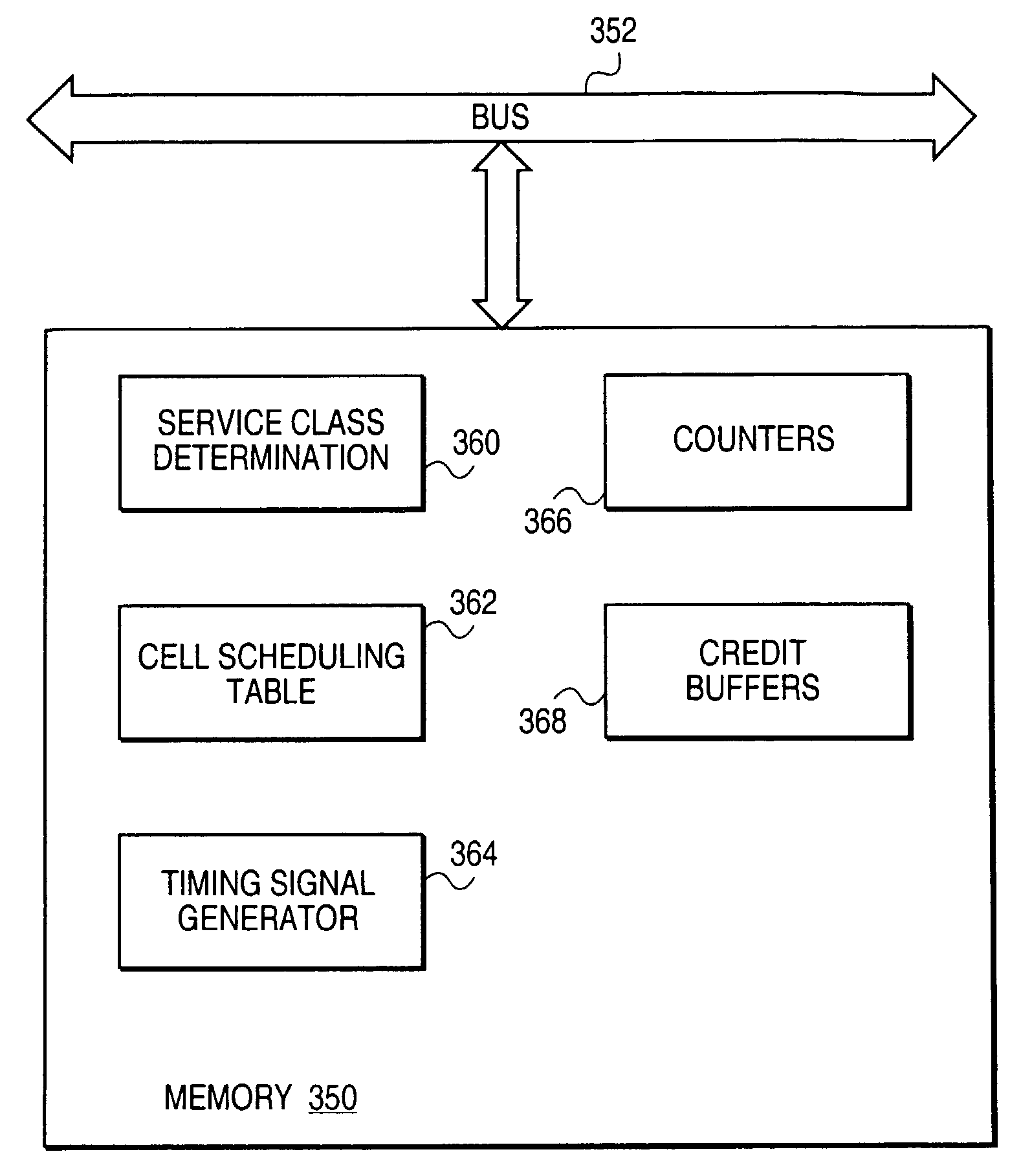Method and apparatus for controlling the transmission of cells across a network
a technology of cell transmission and network, applied in the direction of data switching network, frequency-division multiplex, instruments, etc., can solve the problems of large chip silicon area and die size required for the associated counters and timers, and the ubiquitousness of telephone network infrastructure, so as to reduce the processing load of network processors and reduce timer interrupts
- Summary
- Abstract
- Description
- Claims
- Application Information
AI Technical Summary
Benefits of technology
Problems solved by technology
Method used
Image
Examples
Embodiment Construction
[0035]FIG. 1 is a system block diagram of a Multiservice Access Concentrator (MAC) 100 of an embodiment of the present invention for routing integrated data, voice, and video traffic. The MAC 100 of an embodiment is a compact, low-cost multi-service access device that integrates local area network (LAN), synchronous data, voice, video and facsimile traffic for transport over a network system 169 comprising public and private Frame Relay, asynchronous transfer mode (ATM), synchronous transfer mode, bisynchronous transfer mode, and time division multiplexed (TDM) networks. Multi-protocol routing is combined with voice, but the embodiment is not so limited. The video support of the MAC of an embodiment comprises transport over ATM, Frame Relay, and TDM circuits. The MAC uses a software-configurable wide area network (WAN) trunk to seamlessly integrate data, voice, and video into existing networks using common switch and network hardware, and without reconfiguring the network switch har...
PUM
 Login to View More
Login to View More Abstract
Description
Claims
Application Information
 Login to View More
Login to View More - R&D
- Intellectual Property
- Life Sciences
- Materials
- Tech Scout
- Unparalleled Data Quality
- Higher Quality Content
- 60% Fewer Hallucinations
Browse by: Latest US Patents, China's latest patents, Technical Efficacy Thesaurus, Application Domain, Technology Topic, Popular Technical Reports.
© 2025 PatSnap. All rights reserved.Legal|Privacy policy|Modern Slavery Act Transparency Statement|Sitemap|About US| Contact US: help@patsnap.com



